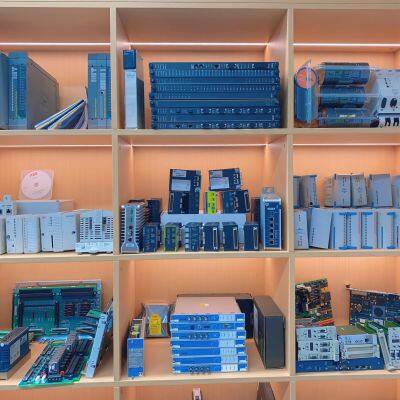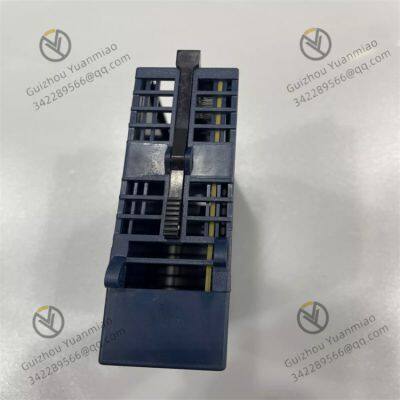GE IC695CMM002 Universal Communication Module
- T/T PayPal Western Union
You May Like
Product Details
| Material | Other | Certification | Other | |
| Function | Other | Condition | Other | |
| Task | Other | Mathematical Model | Other | |
| Signal | Other | Customized | Other | |
| Structure | Other |
Product Description
GE IC Series Module -01
GE IC695CMM002 Universal Communication Module
Working PrincipleCommunication Protocol Processing Principle
Serial Communication Principle
Interaction Principle with PLC
Data Transmission and Control Principle
The module adopts patented high-speed technology to improve data transmission efficiency. During data transmission, it caches and processes data to ensure accuracy and integrity. The module also has status monitoring and control functions: it monitors its working status (such as normal communication or errors) through internal logic circuits and programs, and feeds back these status information to users via LED indicators or status bits, facilitating fault diagnosis and system maintenance. In addition, users can control the communication process (such as setting communication parameters, starting or stopping communication) through programming.
Functional FeaturesCommunication Capability
Performance and Reliability
Status Monitoring and Indication
Compatibility and Compliance
Application FieldsIndustrial Automation
Power Industry
Energy Management
Transportation
Water Treatment and Environmental Protection
Mechanical Processing
Company Profile

Main products: Covering globally renowned brands: Bently Nevada, Triconex, Woodward, Foxboro, Westinghouse, Reliance, Schneider Modicon, ABB, AB (Allen-Bradley), Motorola, GE Fanuc, Yaskawa, Bosch Rexroth Rexroth, ACSO, YOKOGAWA, Rexroth, NI, ICS Triplex, Kollmorgen, Mitsubishi, MOOG, Emerson, B&R B&r, SST, ALSTOM, KUKA EPRO, LAM HIMA dark Horse, HONEYWELL, prosoft, AMAT, SIEMENS, etc. The product categories include: DCS system accessories, robot system spare parts, large servo system spare parts, etc., which are widely used in power, chemical, metallurgy, intelligent manufacturing and other fields.
Contact Us

- Guizhou Yuanmiao Automation Equipment Co., Ltd.
- Contact nameyezi Chat Now
- AddressXixiu District, Anshun, Guizhou
Product Categories
New Products
-
ABB KUC755AE105 3BHB005243R0105 Power Supply Module
-
GE IC695CMX128 Control memory Swap module
-
GE IC695CPE302 PACSystems RX3i series processor module
-
GE IC695CPE305 High-performance programmable automation controller
-
GVC736CE101 IGCT (Integrated Gate Converter Thyristor) series
-
HESG216876 Multi channel vibration meter
-
MC91 HESG440588R4 industrial-grade power supply module
-
GE IC695CPE310 PACSystems RX3i series processor module
-
NF93A-2 HESG440280R2 Controller ABB
-
PM902F 3BDH001000R0001 Central Processing Unit Module
-
GE IC695CPE330 Programmable Automation Controller
-
PP836A 3BSE042237R2 Touch screen operation panel
-
PPC380AE102 HIEE300885R010 Control module board
-
ABB PM864A 3BSE018161R1 Processor Unit
-
PPD103B101 3BHE020455R0101 excitation controller
-
GE IC695CPE400 PACSystems RX3i series CPU module
-
ABB PM891 3BSE053240R1 Processor Unit
-
REF615C-D HCFFAEAGABC2BAA1XD Feedline protection measurement and control device
-
ABB PM861K01 3BSE018105R1 Processor Unit
-
REF615E-D HBFDACADANB1BNN1XD Feedline protection measurement and control relay
-
GE IC695CPK330 PACSystem RX3i processor module
-
ABB PM856K01 3BSE018104R1 Processor Unit
-
GE IC695CPL410 high-performance controller module
-
GE IC695CPU315 PACSystems RX3i processor module
Find Similar Products By Category
- Electrical & Electronics > Electrical Control System
Product Tags:
- Please Enter your Email Address
- Please enter the content for your inquiry.
We will find the most reliable suppliers for you according to your description.
Send Now-
 yezi
Hi there! Welcome to my shop. Let me know if you have any questions.
yezi
Hi there! Welcome to my shop. Let me know if you have any questions.
Your message has exceeded the limit.

- Contact supplier for lowest price
- Customized Request
- Request Sample
- Request Free Catalogs
Your message has exceeded the limit.
-
Purchase Quantity
-
*Sourcing Details
Your inquiry content must be between 10 to 5000 characters.
-
*Email
Please enter Your valid email address.
-
Mobile






